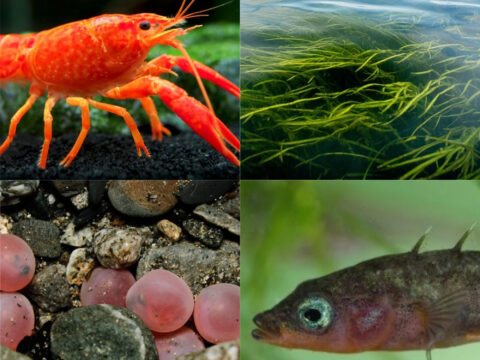
By OB B
Archives suggest that salmon have spawned in the creek. The most recent attempt was in November 2003 when a male spawning salmon was found in Bowker creek.

By OB O
Here is National Geographic's Video about Salmon and their salmon run.

By OB O
Click to listen to the sound of a Mallard Duck.

By OB O
Mallard ducks eat small crustaceans, grasses, and weeds. Ducks will also eat small sticklebacks and fish eggs, which is bad for salmon.

By Jen Arn
music

1In 1 playlists
By Jen Arn
TAZ

1In 1 playlists
Testing description

1In 1 playlists
By Jen Arn
Fossils
